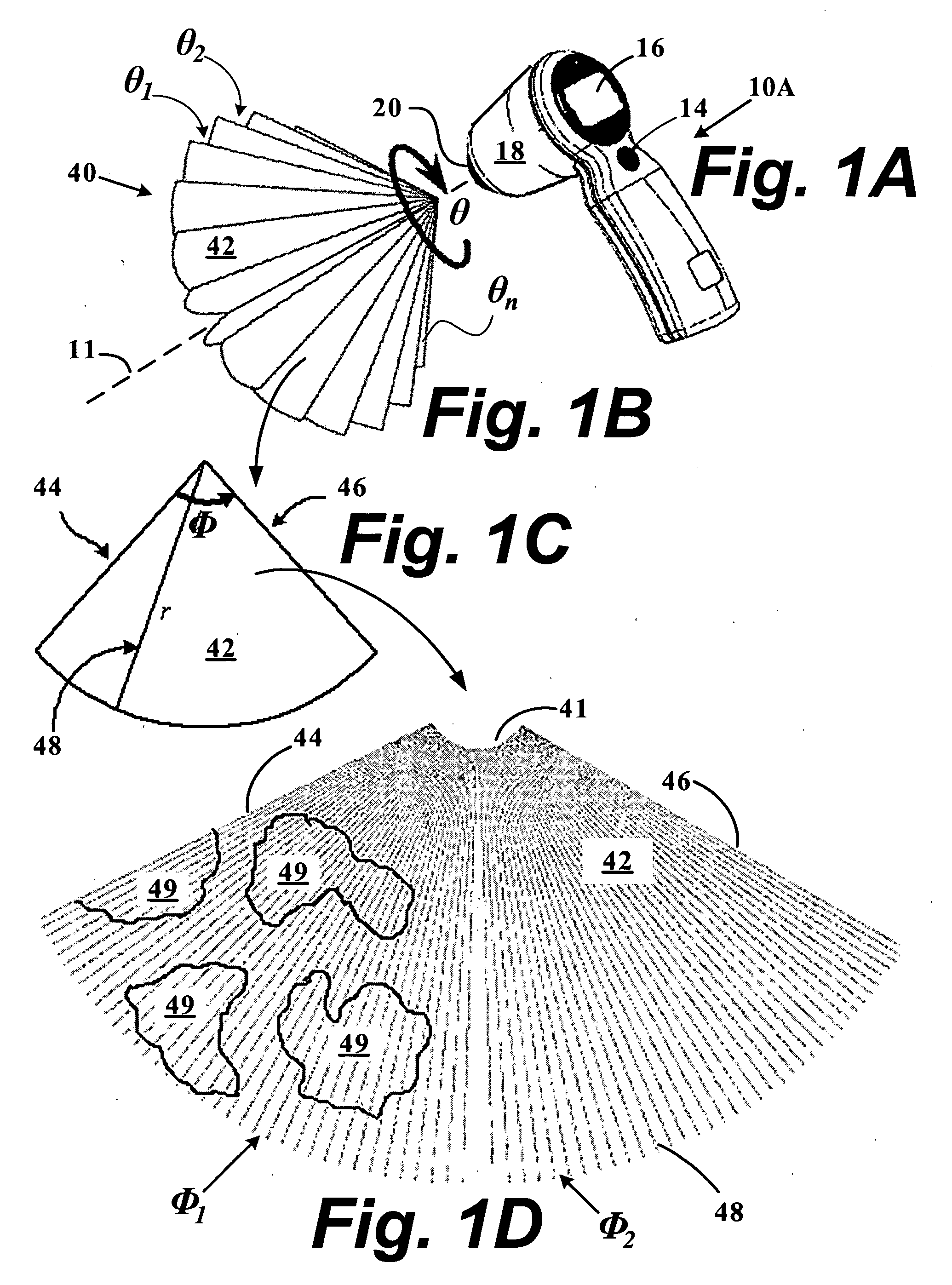Systems and methods for determining organ wall mass by three-dimensional ultrasound
- Summary
- Abstract
- Description
- Claims
- Application Information
AI Technical Summary
Problems solved by technology
Method used
Image
Examples
Embodiment Construction
[0047] Methods and systems to acquire an ultrasound estimated organ wall mass and / or weight such as a bladder using three dimensional ultrasound echo information are described. The three-dimensional (3D) based ultrasound information is generated from a microprocessor-based system utilizing an ultrasound transceiver that properly targets the organ or other region of interest (ROI) and utilizes algorithms to delineate the inner (sub-mucosal) and outer (sub-serosal) wall boundaries of the organ wall as part of a process to determine the organ wall weight or mass. When the organ is a bladder, bladder wall algorithms operate without making geometric assumptions of the bladder so that the shape, area, and thickness between the sub-mucosal and subserosal layers of the bladder wall are more accurately determined to provide in a turn a more accurate determination of the bladder wall volume. Knowing the accurate bladder volume allows a more accurate determination of bladder wall weight or mas...
PUM
 Login to View More
Login to View More Abstract
Description
Claims
Application Information
 Login to View More
Login to View More - R&D
- Intellectual Property
- Life Sciences
- Materials
- Tech Scout
- Unparalleled Data Quality
- Higher Quality Content
- 60% Fewer Hallucinations
Browse by: Latest US Patents, China's latest patents, Technical Efficacy Thesaurus, Application Domain, Technology Topic, Popular Technical Reports.
© 2025 PatSnap. All rights reserved.Legal|Privacy policy|Modern Slavery Act Transparency Statement|Sitemap|About US| Contact US: help@patsnap.com



